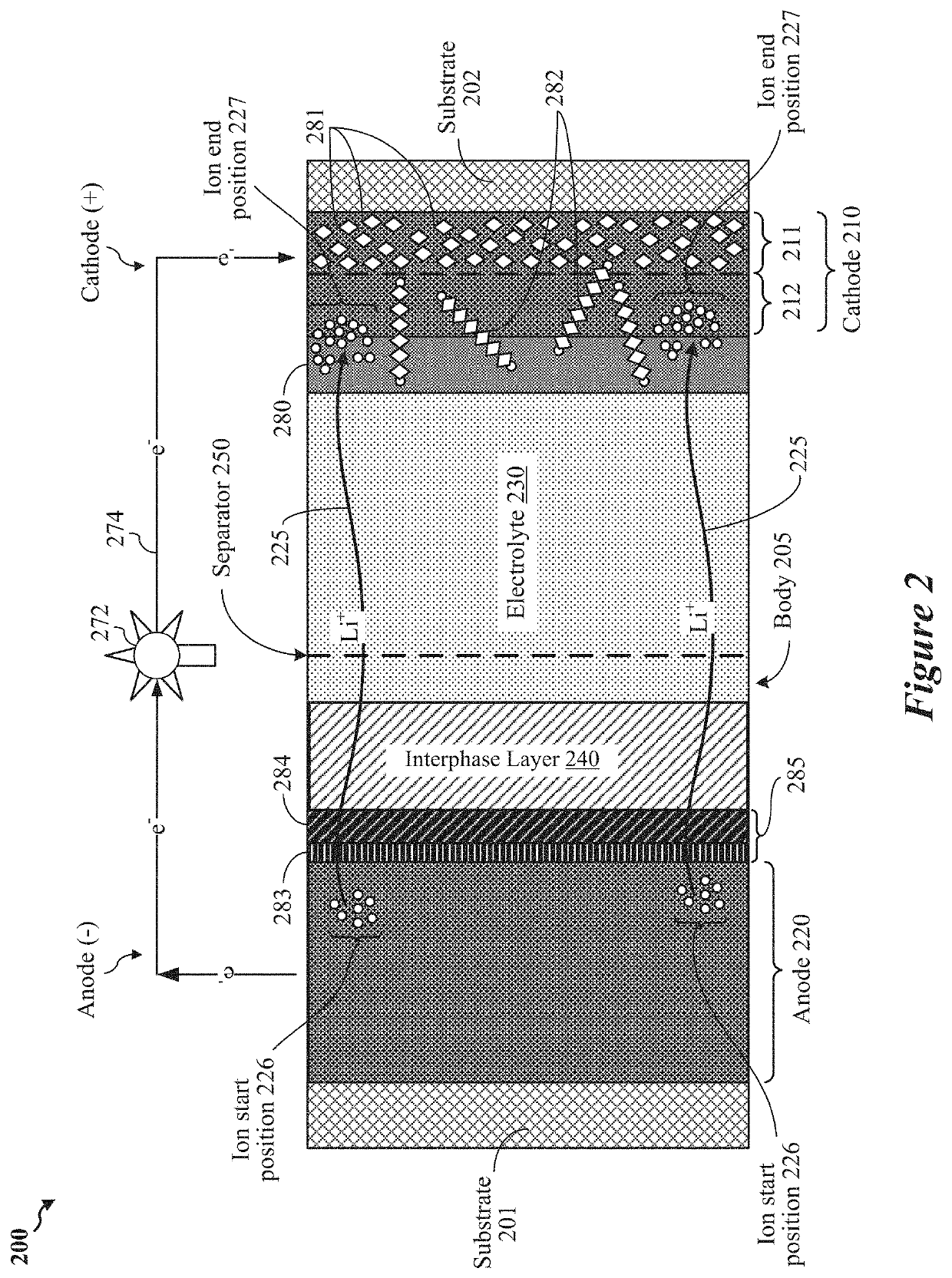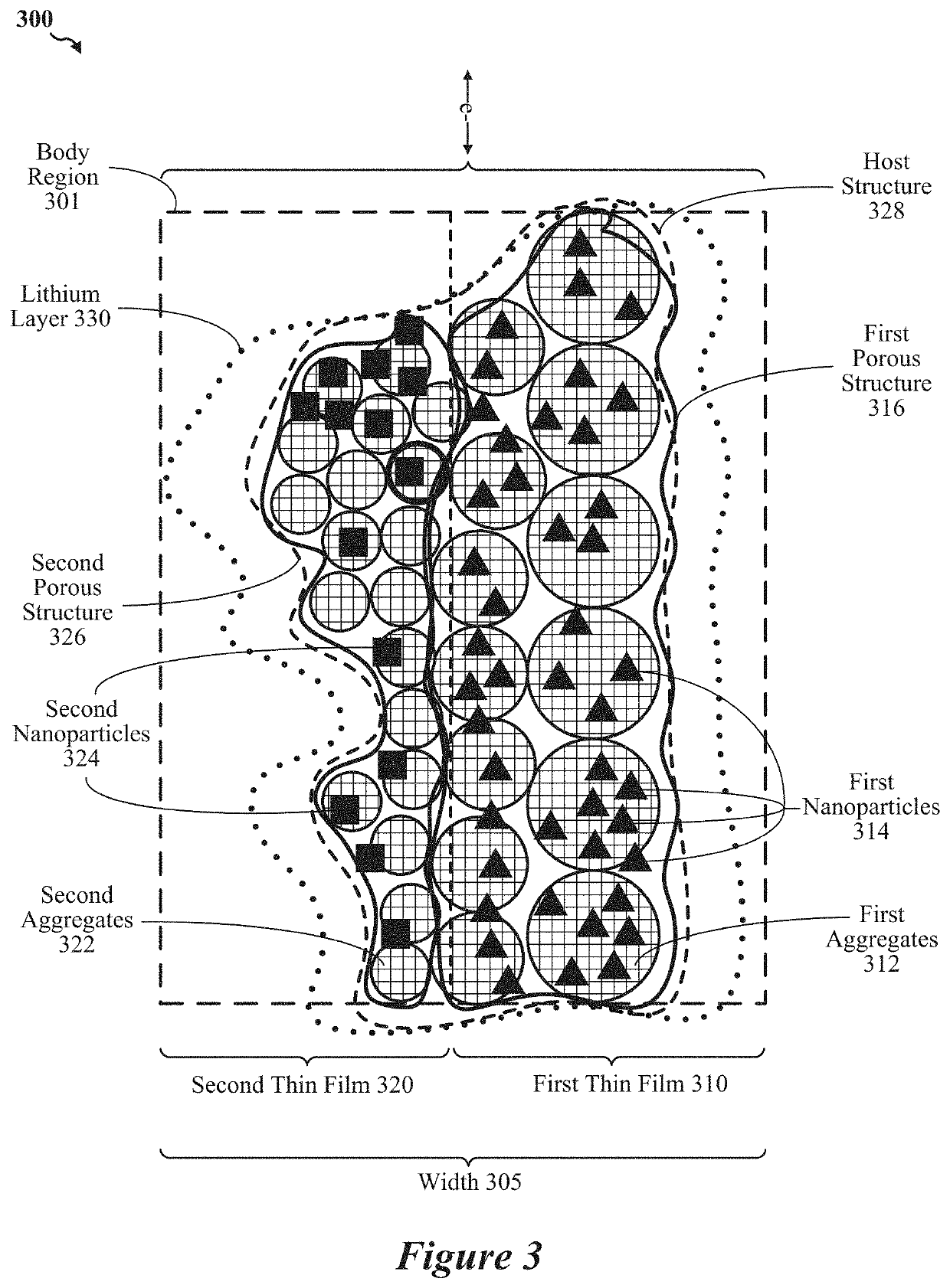Protective layer including tin fluoride disposed on a lithium anode in a lithium-sulfur battery
a protection layer and lithium anode technology, applied in the field of lithium-sulfur batteries, to achieve the effects of reducing the susceptibility of the cathode to rupturing, preventing polysulfide migration, and suppressing alkali metal dendrite formation
- Summary
- Abstract
- Description
- Claims
- Application Information
AI Technical Summary
Benefits of technology
Problems solved by technology
Method used
Image
Examples
Embodiment Construction
[0036]The following description is directed to some example implementations for the purposes of describing innovative aspects of this disclosure. However, a person having ordinary skill in the art will readily recognize that the teachings herein can be applied in a multitude of different ways. The described implementations can be implemented in any type of electrochemical cell, battery, or battery pack, and can be used to compensate for various performance related deficiencies. As such, the disclosed implementations are not to be limited by the examples provided herein, but rather encompass all implementations contemplated by the attached claims. Additionally, well-known elements of the disclosure will not be described in detail or will be omitted so as not to obscure the relevant details of the disclosure.
[0037]Batteries typically include several electrochemical cells that can be connected to each other to provide electric power to a wide variety of devices such as (but not limited...
PUM
 Login to View More
Login to View More Abstract
Description
Claims
Application Information
 Login to View More
Login to View More - R&D
- Intellectual Property
- Life Sciences
- Materials
- Tech Scout
- Unparalleled Data Quality
- Higher Quality Content
- 60% Fewer Hallucinations
Browse by: Latest US Patents, China's latest patents, Technical Efficacy Thesaurus, Application Domain, Technology Topic, Popular Technical Reports.
© 2025 PatSnap. All rights reserved.Legal|Privacy policy|Modern Slavery Act Transparency Statement|Sitemap|About US| Contact US: help@patsnap.com



